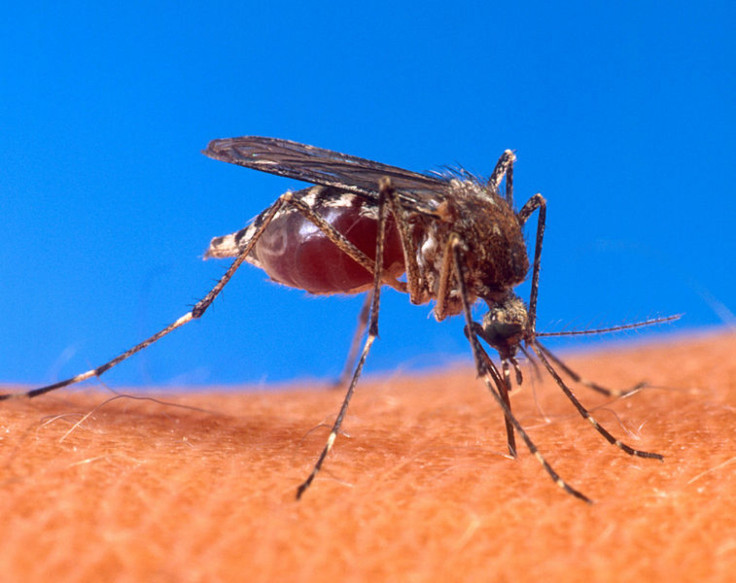Rare Mosquito Fossil Contains 46-Million-Year-Old Animal Blood

A rare mosquito fossil containing ancient animal blood was recently recovered from oil shale in northwestern Montana. The 46-million-year-old mosquito fossil still had a dark, distended abdomen, much like that of a modern mosquito that has just gorged on blood.
According to Western Digs, this is the first blood-filled ancient fossilized mosquito ever found.
"The chances that such an insect would be preserved in shale is almost infinitesimally small," Dale Greenwalt, a researcher at the National Museum of Natural History in Washington, D.C., told LiveScience.
The rare mosquito fossil was given to the museum as a gift. According to NBC News, Greenwalt immediately noticed something very odd about the fossilized insect. Greenwalt and his team of researchers proceeded to bombard the mosquito fossil with molecules of bismuth, which causes certain chemicals in the fossil to vaporize. These vapors were then analyzed using a mass spectrometer, which identifies chemicals by their atomic weights, a process called time-of-flight secondary ion mass spectrometry.
Among the chemicals they recovered from the fossilized mosquito were porphyrins, which are organic compounds present in hemoglobin, a protein found in blood.
Scientists say finding these compounds provides “incontrovertible documentation” of heme, and therefore likely hemoglobin, inside the mosquito’s abdomen – a record of its very last meal before perishing and subsequently being preserved in sediment.
Unfortunately, it’s impossible to tell what kind of animal the blood came from. DNA doesn’t preserve very well – The Sydney Morning Herald notes that DNA can’t survive more than 6.8 million years – and current technology can’t pick out DNA from fossils older than that. The mosquito is from the Eocene epoch, lasting from 56 to 33.9 million years ago – about 19 million years after dinosaurs went extinct.
Unfortunately, that means no real-life “Jurassic Park.”
Researchers’ report on the fossilized mosquito appeared Monday in the journal Proceedings of the National Academy of Sciences.
“[The paper] shows that details of a blood-sucking mosquito can be nicely preserved in a medium other than amber,” paleontologist George Poinar of Oregon State University, who was not involved in this research, told The Scientist.
To see a photo of the rare fossilized mosquito found in Montana, click here.
The discovery of the fossilized mosquito with ancient animal blood in it is only the fifth time scientists have come across an insect fossil containing blood. “Most fossils of blood-eating insects that have been found are of midges, a kind of biting fly, trapped in amber,” Western Digs notes.
The mosquito was recovered from shale, a type of rock that forms from sediments deposited at the bottom of bodies of water. Researchers note that the insect was probably blown into a lake or pond and sank to the bottom, where it became embedded in the sediment for eons.
What’s shocking is that the sedimentation didn’t damage the fragile insect’s blood-filled abdomen.
© Copyright IBTimes 2024. All rights reserved.






















